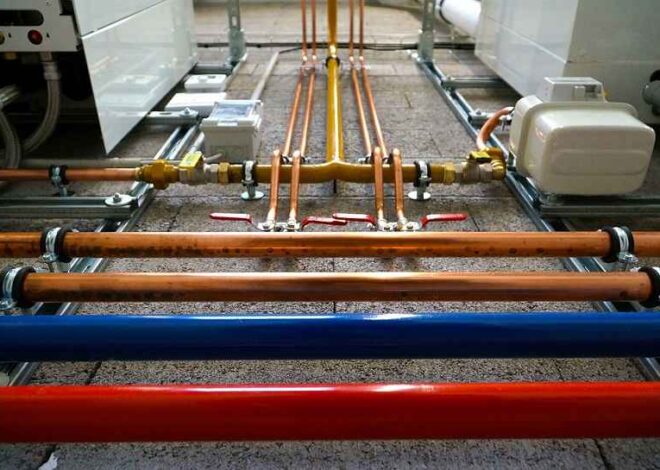
Quick Fixes: How to Rescue Your Clogged Garbage Disposal in Minutes
Picture this: it’s a busy weeknight, and you’re whipping up dinner for your family. The aroma of sautéed vegetables fills the air, but as you reach to clean up, disaster strikes—a clogged garbage disposal! Suddenly, your culinary masterpiece is overshadowed by an unsightly backup that threatens to ruin the entire evening. But don’t panic just yet! In this post, we’ll arm you with simple, effective solutions to get your kitchen back on track in no time. With a few quick fixes and handy tips at your fingertips, you’ll be able to rescue your garbage disposal from the depths of despair—no plumber required! Let’s dive into these speedy strategies that will have your kitchen running smoothly again in mere minutes.
Introduction: The frustration of a clogged garbage disposal
There’s nothing quite as frustrating as the moment you flip the switch on your garbage disposal, only to be met with an ominous silence or worse—a gurgling mess. A clogged garbage disposal can turn a simple kitchen chore into a nightmare in seconds. Suddenly, you’re faced with an unsightly pile of food scraps and an evening that could have been peaceful now feels like an uphill battle against plumbing woes. But fear not! With a few quick fixes up your sleeve, you’ll have your sink humming happily again in no time. Let’s dive into how to rescue your clogged garbage disposal and reclaim your kitchen space from chaos.
Understanding the causes of a clogged garbage disposal
A clogged garbage disposal can quickly turn into a homeowner’s nightmare. Understanding what leads to these frustrating blockages is key.
One common cause is food waste. Fibrous vegetables like celery or potato peels can wrap around blades, creating a tangled mess. Grease also plays a sneaky role; it hardens in pipes over time and traps debris.
Small objects often find their way into the disposal too—things we never intended to toss down there, like utensils or bones. Even small amounts of non-food items can accumulate and create significant problems.
Lastly, improper use contributes significantly to clogs. Overloading the unit or running it without enough water are frequent missteps that lead to backups. Knowing these causes helps you take proactive measures against them in your kitchen routine.
Step-by-step guide to unclogging your garbage disposal
When your garbage disposal is clogged, start with a plunger. Make sure to cover the sink drain completely and plunge vigorously for about 30 seconds. This might just dislodge whatever is causing the blockage.
If that doesn’t work, try a natural remedy: baking soda and vinegar. Pour half a cup of baking soda into the disposal followed by an equal amount of vinegar. Let it fizz for ten minutes before flushing it with hot water.
For stubborn clogs, grab a plumber’s snake. Insert it gently into the disposal until you feel resistance. Twist and turn to break up or pull out what’s blocking the system.
If there’s something large lodged inside, use tongs or pliers to safely extract it without damaging any parts of your disposal unit. Always remember to disconnect power first for safety!
-
Using a plunger
Using a plunger can be an effective method for tackling a clogged garbage disposal. Before you start, ensure the disposal is turned off to avoid any accidents.
Choose a standard cup plunger—this tool creates the necessary suction. Position it over the sink’s drain, ensuring there’s enough water to cover the bottom of the plunger. The seal is vital for this technique.
Pump up and down vigorously. The motion should create pressure that helps dislodge whatever is causing the blockage. It might take several attempts, but persistence pays off.
Once you feel resistance easing, turn on your disposal with cold water running. This will help flush away any loosened debris. If all goes well, you’ll hear that satisfying grind as your disposal returns to normal operation!
-
Using baking soda and vinegar
One of the most effective methods for tackling a clogged garbage disposal is using baking soda and vinegar. This dynamic duo creates a natural fizzing reaction that can help break down stubborn debris.
Start by pouring half a cup of baking soda directly into the disposal. Let it sit for about 10-15 minutes to allow it to work its magic on any buildup inside. While you wait, prepare your vinegar.
Next, pour one cup of white vinegar into the disposal over the baking soda. You’ll notice bubbling and fizzing—this is a good sign! The combination helps loosen grease and food particles stuck within the blades.
After letting this mixture sit for another few minutes, run hot water down the drain while turning on your garbage disposal. This flushes away any remaining residue, leaving you with a clearer path for waste to flow through effectively.
-
Using a plumber’s snake
If your garbage disposal is still clogged after trying other methods, a plumber’s snake might be your best bet. This handy tool can reach deep into the drain and remove stubborn blockages.
Begin by removing the disposal unit from the sink if possible. Locate the access point for inserting the snake. Carefully feed it into the opening until you encounter resistance.
Twist and push gently to break up or grab onto whatever is causing the clog. You may need to maneuver it a bit to fully dislodge debris.
Once you’ve cleared it out, slowly withdraw the snake while checking for any remaining materials that could cause future issues. Don’t forget to reassemble everything before testing your disposal again.
Using a plumber’s snake takes patience but can save you from calling in a professional when faced with persistent clogs.
-
Dislodging large objects with tongs or pliers
When you have a stubborn clog, sometimes the issue is caused by larger objects trapped in your garbage disposal. In this case, manual intervention becomes necessary.
Grab a pair of tongs or pliers for safe removal. Make sure the unit is unplugged first to avoid any accidents. Carefully reach down into the disposal chamber and feel around for anything that shouldn’t be there—like forks, spoons, or even chunks of food.
Move slowly to avoid causing damage to the blades inside. Once you locate an obstruction, gently grasp it with your tool and pull it out.
After removing all visible debris, run cold water through the disposal while turning it on briefly to flush out any remaining particles stuck inside. This simple step can help ensure that nothing else lingers in your system after dislodging those larger items.
Preventing future clogs with proper maintenance tips
Keeping your garbage disposal running smoothly requires a bit of attention. Regular maintenance makes a huge difference.
Start by rinsing the unit with cold water for 30 seconds after each use. This helps flush away any food particles that could cause buildup.
Be mindful of what you put down the disposal. Avoid hard items like bones, fibrous vegetables, and large chunks of food. Stick to softer scraps instead.
Consider grinding ice cubes occasionally; this can help clean the blades and remove grease residue as they break apart.
A monthly treatment with baking soda followed by vinegar will also keep odors at bay and maintain efficiency. Let it fizz for a few minutes before flushing with water.
Lastly, don’t forget to inspect your disposal regularly for any signs of wear or potential issues, addressing them early can save time and hassle later on.
Common mistakes to avoid when dealing with a clogged garbage disposal
When tackling a clogged garbage disposal, it’s easy to make mistakes that can worsen the problem. One common error is using excessive force when trying to dislodge food particles. This can damage the blades or motor, leading to costly repairs.
Another pitfall is pouring harsh chemicals down the drain. These substances can corrode your pipes and harm the environment without effectively clearing the clog.
Neglecting to turn off the power before starting any work is also risky. Always ensure safety first by unplugging or switching off your disposal unit.
Lastly, many people forget about proper maintenance after resolving a clog. Regularly cleaning and inspecting your disposal will help prevent future issues from arising, saving you time and hassle in the long run.
Conclusion: Don’t let a clogged garbage disposal ruin your day, follow these quick fixes for easy and efficient unclogging.
A clogged garbage disposal can be a real hassle, but it doesn’t have to derail your day. With the quick fixes outlined above, you can tackle most clogs efficiently and effectively. Whether you choose to use a plunger, baking soda and vinegar, or even a plumber’s snake, these methods are designed for simplicity and speed.
Remember that prevention is key; regular maintenance will help keep your disposal running smoothly. Be mindful of what goes down the drain and avoid common mistakes that could lead to further issues.
By following these tips, you’ll maintain not only a functional garbage disposal but also peace of mind in your kitchen. Don’t let plumbing problems get the best of you—take action today!


